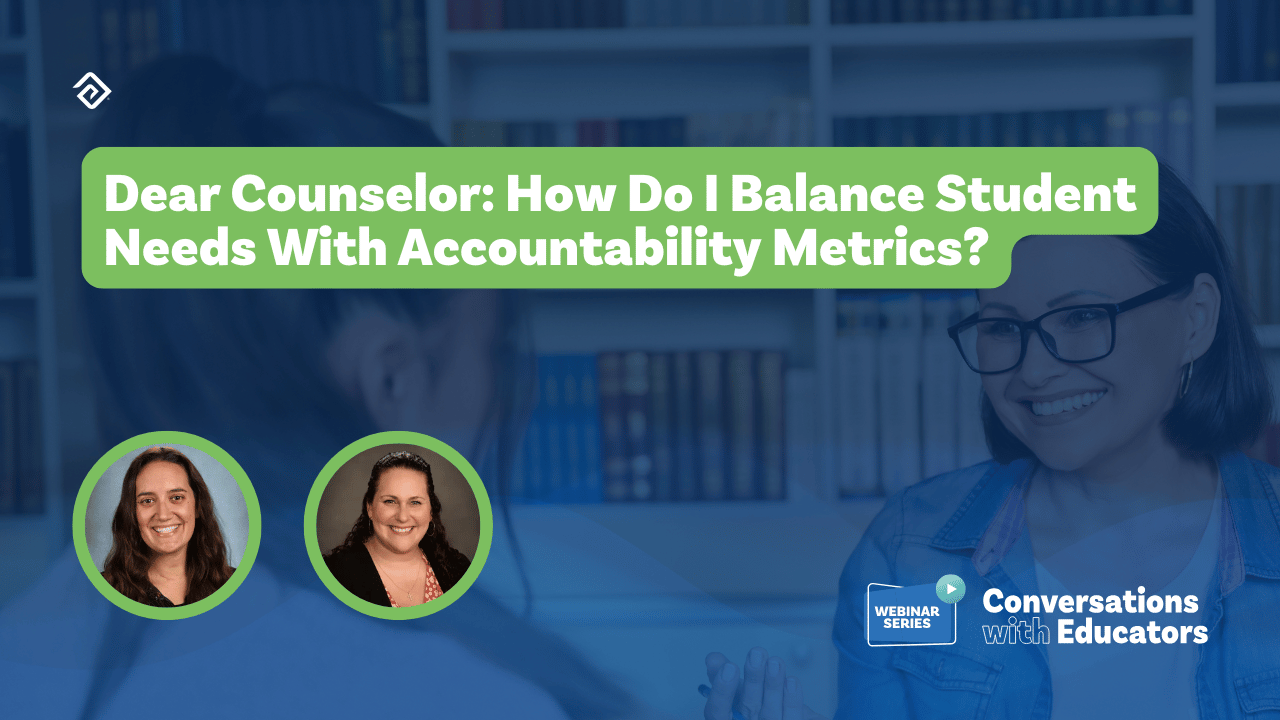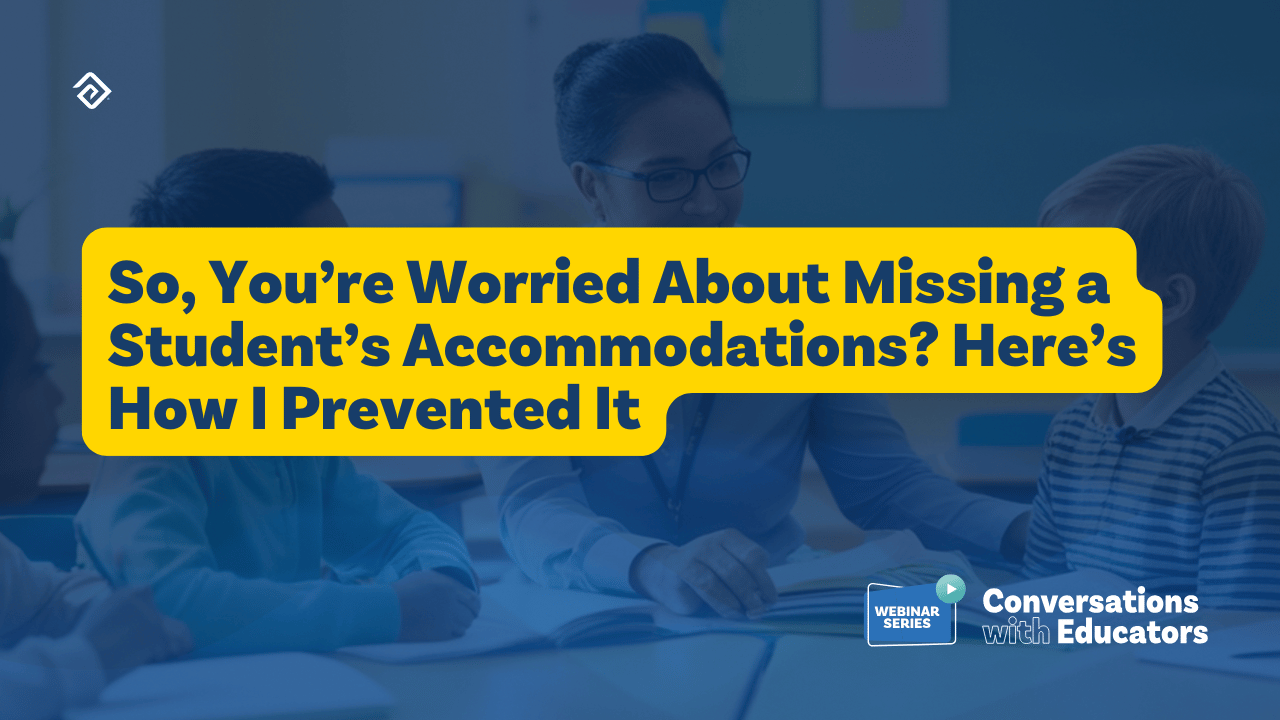Student Progress Monitoring for High Schools
Planning Student Progress Monitoring
Student progress monitoring is a critical process during which teachers assess students' academic performance to gain more insight into the effectiveness of specific instruction methods or educational interventions. Faculty teams design student progress monitoring processes to ensure they have a plan for:
- The collection and storage of student data
- The frequency of assessments
- The method of analyzing data
- The way to use the data analysis to make informed instructional decisions
Once teachers have laid out a plan for student progress monitoring, they choose tools for the process. Factors they consider when selecting the proper measurement tools include:
- What needs to be measured
- The context in which they need to make assessments
- The technical adequacy of the tools

How Student Progress Monitoring Works
During the student progress monitoring process, teachers determine a student's starting performance regarding a skill or set of skills they will learn throughout the year. Teachers also set goals for where a student should be in terms of that particular skill by year's end. They determine the rate of progress that must happen for a student to reach those goals, then measure progress regularly to make sure that their instructional methods or interventions allow for their intended results.
If students are learning at a sufficient rate, they may stick with the interventions they use. If learning is insufficient, they should adjust their instructional approach.
How to Measure the Results of Progress Monitoring
To measure progress in the student monitoring process, teachers should:
- Graph a line to showcase where a student is starting and where they should be by the end of the year.
- Plot points representing the result of progress monitoring on the same graph
- Compare the trajectory of the student's results to the initial graph
- Adjust instruction accordingly
Training Teachers to Use Student Progress Monitoring
Faculty members undergo training to use selected tools that allow them to effectively manage student progress monitoring. School staff members can participate in regular training to use the tools effectively, ensure consistency across all classrooms and contexts, and understand the meaning of results. The training process should include explanations about why the assessments happen and how they can extrapolate important information about the effectiveness of teaching methods from the results.

Who Can Benefit From Progress Monitoring?
Student progress monitoring can happen for a small, select group of students participating in a particular type of instruction, or it can happen system-wide across groups as large as grade levels or school districts. Teachers measure student progress regularly (e.g., weekly) with short assessments to stay on top of the progress rate in their classroom.
Initially, student progress monitoring helped special education teachers determine if their interventions helped struggling students. However, research shows progress monitoring is an effective way for all teachers to become aware of the effectiveness of their teaching methods and measure their own performance. There are many academic arenas in which progress monitoring makes sense, especially:
- Literacy
- Learning of English language
- Interventions for students at risk of academic failure
- Social-emotional behavior progress
Progress monitoring is also a good way for teachers to determine which students are at risk of struggling in the classroom and may need additional academic support and which students are on track for their grade level.
Student Progress Monitoring Methods
There are an infinite number of ways teachers can measure student progress. Some schools may come up with their tests or assessments. Other faculty teams may choose to use standardized approaches to progress monitoring approved and made available by the National Center for Student Progress. Choosing the right means of assessing student progress can come down to factors like:
- Who administers the progress monitoring assessments
- Which students receive progress monitoring
- Which subjects or academic areas do teachers need to assess
- What other kinds of assessments students took previously
The Benefits of Student Progress Monitoring
There are myriad benefits of using student progress monitoring. Assessments of student progress allow teachers to ensure their chosen methods of instruction are working as intended. Progress monitoring allows teachers to tweak their interventions to ensure students are advancing at the rate they should be.
The other most important benefits of student progress monitoring include the following:
- Offering students multi-tiered systems of support
- Warning teachers early if a high school-level student may be at risk of falling behind peers
- Effectively staffing classroom and special education teams
- Separating students into tiers so they receive adequate instructions

Conclusion
Student progress monitoring is vital for schools that want to ensure they provide the most effective educational experience possible for all students. The progress monitoring process allows teams to assess where each child is, then tailor the educational interventions offered so that no student falls too far behind. Whether a school chooses to use a standardized means of progress monitoring, like the CBM or CAT, or they decide to create their customized means of student progress monitoring, they should ensure the following:
- Teachers receive training in the process
- Progress monitoring is done regularly
- Faculty members grasp how to understand and extrapolate helpful information from the results
- Meaningful changes happen as a result of monitoring
When done right, student progress monitoring can ensure that every student experiences the classroom as a place where learning is possible and not too challenging and that the instruction they receive helps them grow and move forward.
If your school is interested in new ways to improve the learning experience for children, you may also be interested in automating tasks and streamlining processes so that your teachers have more time to teach. Education Advanced offers a large suite of tools that may be able to help:
- Evaluation allows school administrators to efficiently document every step of the staff evaluation process, including walk-throughs, self-evaluations, supporting evidence, reporting and performance analytics.
- TestHound, our test coordination software, helps schools coordinate thousands of students across all state and local K-12 school assessments while taking into account dozens of accommodations (reading disabilities, physical disabilities, translations, etc.) for students.
- Pathways is a graduation tracking tool that allows administrators and counselors to create, track and analyze student graduation pathways to ensure secondary students are on track to graduate and build an educated, talented workforce for the future.
More Great Content
We know you'll love





